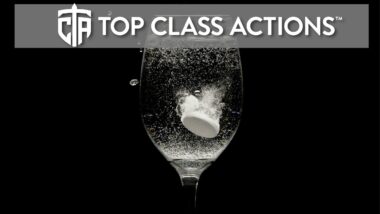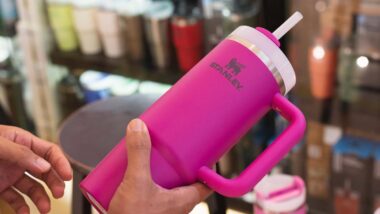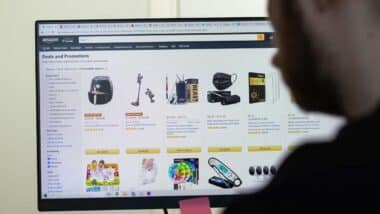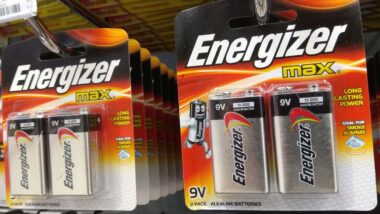Top Class Actions’s website and social media posts use affiliate links. If you make a purchase using such links, we may receive a commission, but it will not result in any additional charges to you. Please review our Affiliate Link Disclosure for more information.

U.S. District Judge Dolly M. Gee dismissed the Hyundai class action lawsuit on July 24 saying that the plaintiffs did not suffer any injuries “nor do they allege any imminent injury.” Gee said that the plaintiffs’ “alleged injury is conjectural and hypothetical, rather than actual and imminent,” and that the allegations are based on “the occurrence of future collisions.”
The Hyundai class action lawsuit was filed in January by Plaintiffs Joanne Anderson, Terri Hill, and Jerome Jeffries alleging that the side air bags in the Tiburon were not designed and made properly.
The plaintiffs alleged that the safety manual that came with the side air bags in the 2008 Tiburon, that Hyundai made various claims that were not true.
“‘Hyundai brings the most advanced technology available to affordable vehicles,'” the manual says. “‘For instance, since 2003, every Hyundai vehicle sold in the United States has been equipped with side impact air-bags as standard equipment.'”
The automaker explains that these “‘side air bags are designed to inflate in moderate to severe side collisions.”
The manual also says that “Hyundai has high standards and is dedicated to safety. . . . Each new Hyundai vehicle will continue to be designed to exceed those standards.”
According to the Hyundai class action lawsuit, “the Tiburon contains ‘standard side air bags intended to protect the head and thorax of front seat occupants in moderate to severe side collisions when serious injury or death is likely to occur without an air bag.'”
The airbag system is made up of “air bag modules, side impact sensors, and an air bag control unit.”
The airbag knows to inflate based on information gathered by the impact sensor and transmitted to the control unit.
“In the Tiburon, the side impact sensor is located on the crossmember of the vehicle,” Gee explained. In all other Hyundais, “the side impact sensor is located on the B Pillar of the vehicle.”
The problem that the plaintiffs have with the side impact air bags is that they “allege that the placement of the side impact sensor results in the sensor receiving a weak signal in response to a collision,” and “that the weak signal ‘significantly reduces the likelihood of deployment of timely deployment of the side air bags.'”
They cite two studies that Hyundai did that allegedly “demonstrate the defects associated with the location of the side impact sensor.”
In their Hyundai class action lawsuit, the “plaintiffs allege that although Hyundai knew about the purportedly weak signal, it failed to move the Tiburon’s side impact sensor to the B pillar.”
The plaintiffs claim that the injury they suffered was “‘an economic loss from purchasing a vehicle that was marketed as safe but was in fact unreasonably unsafe.'”
However, the federal judge didn’t agree with this assertion.
“They allege no details regarding injuries that they themselves have suffered, let alone injuries by those involved in the ‘numerous’ accidents,” Gee writes in her decision. “Nor do plaintiffs allege any imminent injury.”
“Their claim appears to be that in some number of collisions, the side air bags will not deploy or will deploy more slowly because of the location of the sensor and some Tiburon owners will suffer injury as a result,” she explains.
“This alleged injury is conjectural and hypothetical, rather than actual and imminent, given that it depends on the occurrence of future collisions.”
As for any economic loss the plaintiffs claim that they suffered, Gee says that “their economic theory [was] unpersuasive.”
Even though the federal judge dismissed the class action lawsuit, she did give plaintiffs “leave to amend their complaint.”
The plaintiffs were represented by Elaine T. Byszewski, Steve W. Berman, and Sean R. Matt of Hagens Berman Sobol Shapiro LLP, Ari S. Casper of the Casper Firm LLC and Ronald Kovner of Stein Mitchell Muse & Cipolline LLP.
Hyundai was represented by Ekwan E. Rhow, Karis Ann-Yu Chi and Michelle C. Tam of Bird Marella Boxer Wolpert Nessim Drooks Lincenberg & Rhow PC.
The Hyundai Class Action Lawsuit is Joann Anderson et al. v. Hyundai Motor Co. Ltd. et al., Case No. 13-cv-01842, in the U.S. District Court for the Central District of California.
ATTORNEY ADVERTISING
Top Class Actions is a Proud Member of the American Bar Association
LEGAL INFORMATION IS NOT LEGAL ADVICE
Top Class Actions Legal Statement
©2008 – 2024 Top Class Actions® LLC
Various Trademarks held by their respective owners
This website is not intended for viewing or usage by European Union citizens.














